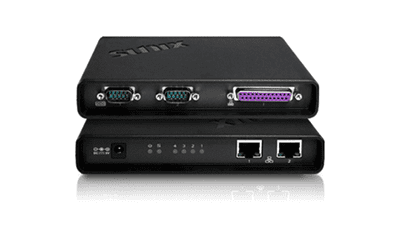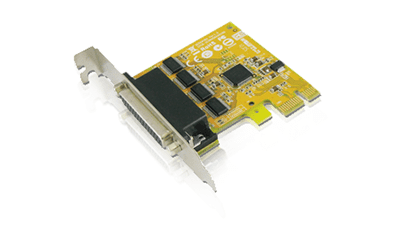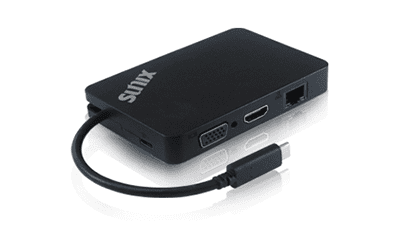SUNCAN CAN FD in Action: Practical Evaluation and Performance on Windows
1. Introduction
In the previous article, we verified SUNCAN’s performance on Linux; in this article, we will verify its performance on Windows. Windows does not have a built-in Socket API for CAN like the Linux Kernel does, each manufacturer must develop their own API. Therefore, we had to develop our own test tool. In this article, we will not only reveal the actual performance but also share the detailed verification process.
2. In Action – Windows
Platform
| OS | Win11 24H2 |
|---|---|
| CPU | Intel 13th I7-13700 |
| Chipset | Raptor Lake H770 |
| Driver | V2.1.1.0 |
| Model | CAN-E2104SI |
| Test Tool | Apply SDC API V1.0.3.0 |

Program Architecture
It must continuously transmit payloads fully filled with 64 bytes, with data set to serialized values from 0x00 to 0x3F, and create a write thread that sends CAN FD messages continuously without any gaps. In addition, a read thread must be created to continuously read CAN messages. Both threads must use a stopwatch for timing. The total transmission time for this test is one minute, with the goal of calculating the throughput within that minute.
- Bitrate setting: 1M/8M
- TX data
- TX thread
- RX thread
- Timer
Throughput Calculation
Wiring
3. Practical Results
According to the test result, SUNCAN achieves a maximum throughput of 4 Mbps. From the current tests on Windows and our previous tests on Linux, it is clear that Linux is notably more efficient than Windows in terms of I/O processing. We also tested several other well-known CAN FD products, and they all showed the same behavior as SUNCAN. This implies that the performance of the operating system has a significant impact on CAN FD throughput.
Articles
Application Note
SUNCAN CAN FD in Action: Practical Evaluation and Performance on Windows
1. Introduction
In the previous article, we verified SUNCAN’s performance on Linux; in this article, we will verify its performance on Windows. Windows does not have a built-in Socket API for CAN like the Linux Kernel does, each manufacturer must develop their own API. Therefore, we had to develop our own test tool. In this article, we will not only reveal the actual performance but also share the detailed verification process.
2. In Action – Windows
Platform
| OS | Win11 24H2 |
|---|---|
| CPU | Intel 13th I7-13700 |
| Chipset | Raptor Lake H770 |
| Driver | V2.1.1.0 |
| Model | CAN-E2104SI |
| Test Tool | Apply SDC API V1.0.3.0 |

Program Architecture
It must continuously transmit payloads fully filled with 64 bytes, with data set to serialized values from 0x00 to 0x3F, and create a write thread that sends CAN FD messages continuously without any gaps. In addition, a read thread must be created to continuously read CAN messages. Both threads must use a stopwatch for timing. The total transmission time for this test is one minute, with the goal of calculating the throughput within that minute.
- Bitrate setting: 1M/8M
- TX data
- TX thread
- RX thread
- Timer
Throughput Calculation
Wiring
3. Practical Results
According to the test result, SUNCAN achieves a maximum throughput of 4 Mbps. From the current tests on Windows and our previous tests on Linux, it is clear that Linux is notably more efficient than Windows in terms of I/O processing. We also tested several other well-known CAN FD products, and they all showed the same behavior as SUNCAN. This implies that the performance of the operating system has a significant impact on CAN FD throughput.
Articles
Application Note
SUNCAN CAN FD in Action: Practical Evaluation and Performance on Windows
1. Introduction
In the previous article, we verified SUNCAN’s performance on Linux; in this article, we will verify its performance on Windows. Windows does not have a built-in Socket API for CAN like the Linux Kernel does, each manufacturer must develop their own API. Therefore, we had to develop our own test tool. In this article, we will not only reveal the actual performance but also share the detailed verification process.
2. In Action – Windows
Platform
| OS | Win11 24H2 |
|---|---|
| CPU | Intel 13th I7-13700 |
| Chipset | Raptor Lake H770 |
| Driver | V2.1.1.0 |
| Model | CAN-E2104SI |
| Test Tool | Apply SDC API V1.0.3.0 |

Program Architecture
It must continuously transmit payloads fully filled with 64 bytes, with data set to serialized values from 0x00 to 0x3F, and create a write thread that sends CAN FD messages continuously without any gaps. In addition, a read thread must be created to continuously read CAN messages. Both threads must use a stopwatch for timing. The total transmission time for this test is one minute, with the goal of calculating the throughput within that minute.
- Bitrate setting: 1M/8M
- TX data
- TX thread
- RX thread
- Timer
Throughput Calculation
Wiring
3. Practical Results
According to the test result, SUNCAN achieves a maximum throughput of 4 Mbps. From the current tests on Windows and our previous tests on Linux, it is clear that Linux is notably more efficient than Windows in terms of I/O processing. We also tested several other well-known CAN FD products, and they all showed the same behavior as SUNCAN. This implies that the performance of the operating system has a significant impact on CAN FD throughput.
Articles
Application Note
SUNCAN CAN FD in Action: Practical Evaluation and Performance on Windows
1. Introduction
In the previous article, we verified SUNCAN’s performance on Linux; in this article, we will verify its performance on Windows. Windows does not have a built-in Socket API for CAN like the Linux Kernel does, each manufacturer must develop their own API. Therefore, we had to develop our own test tool. In this article, we will not only reveal the actual performance but also share the detailed verification process.
2. In Action – Windows
Platform
| OS | Win11 24H2 |
|---|---|
| CPU | Intel 13th I7-13700 |
| Chipset | Raptor Lake H770 |
| Driver | V2.1.1.0 |
| Model | CAN-E2104SI |
| Test Tool | Apply SDC API V1.0.3.0 |

Program Architecture
It must continuously transmit payloads fully filled with 64 bytes, with data set to serialized values from 0x00 to 0x3F, and create a write thread that sends CAN FD messages continuously without any gaps. In addition, a read thread must be created to continuously read CAN messages. Both threads must use a stopwatch for timing. The total transmission time for this test is one minute, with the goal of calculating the throughput within that minute.
- Bitrate setting: 1M/8M
- TX data
- TX thread
- RX thread
- Timer
Throughput Calculation
Wiring
3. Practical Results
According to the test result, SUNCAN achieves a maximum throughput of 4 Mbps. From the current tests on Windows and our previous tests on Linux, it is clear that Linux is notably more efficient than Windows in terms of I/O processing. We also tested several other well-known CAN FD products, and they all showed the same behavior as SUNCAN. This implies that the performance of the operating system has a significant impact on CAN FD throughput.









